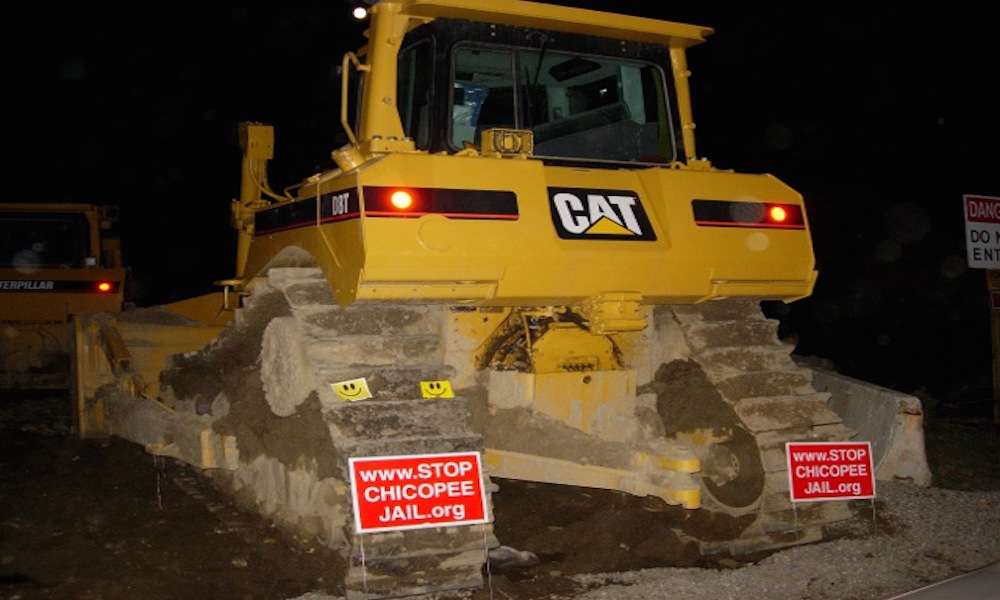Blog
A Legacy of Prison Abolitionism: Anthony Rayson (1954- )
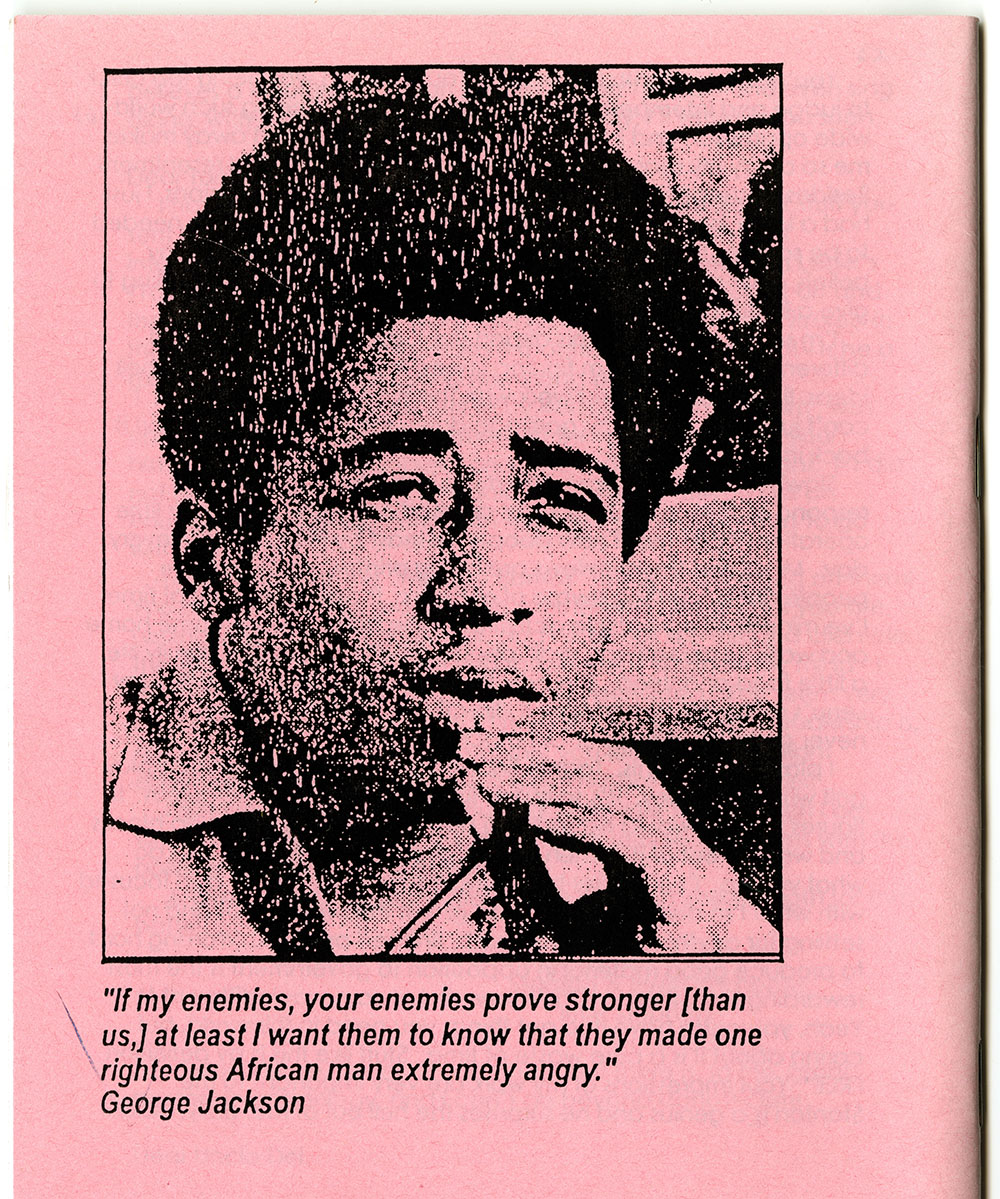
In showing the experience and humanity of prisoners, Rayson urged those outside of prison walls to attune themselves to the “powerful education of which prisoners are capable,” noting that “without the humanity, freedom, and counsel from conscious prisoners, I myself would be in a constant state of dread and despair.” Image from Anthony Rayson Zine Collection. Back cover of Thought Bombs Issue #6 (featuring image of prison activist George Jackson [1941-1971]). (Quote found in Prisons & Society, self-published zine. Rayson, Anthony. Prisons & Society ([1999-2007]). Anthony Rayson Zine Collection, box 2, folder entitled “Mini Zines/Prisons&Society, 1999-2007.” DePaul University Special Collections and Archives.)
Courtesy of: Anthony Rayson (collection at DePaul University Special Collections and Archives).
Believing that...
Lunatic Wine
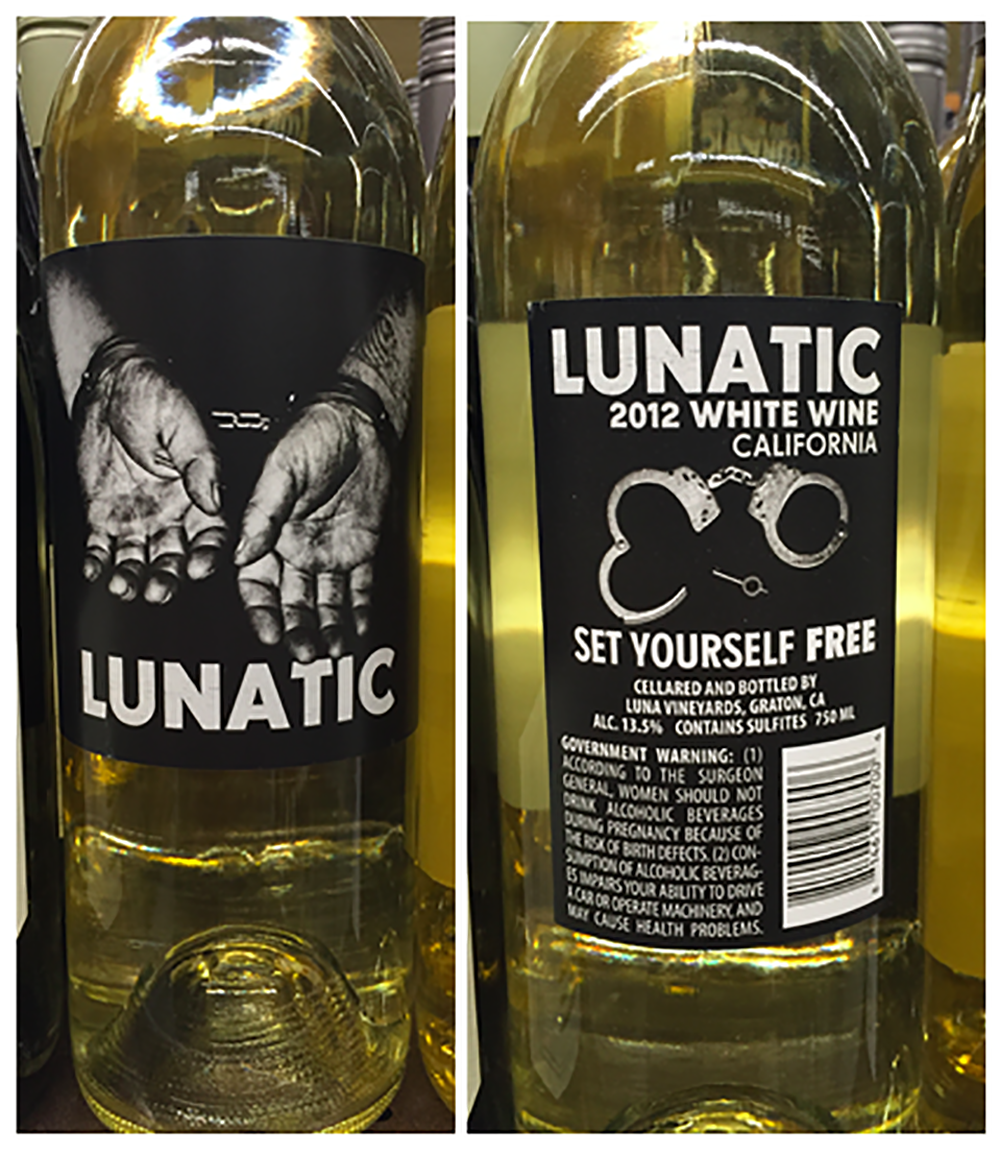
Focusing on the intersections of incarceration and mental illness has not been an easy task. While often deeply fulfilling and extremely disheartening at the same time, this project has allowed us to develop a critical lens through which to view certain elements of popular culture and mass media. With the explosive popularity of television shows like Orange is the New Black and American Horror Story: Asylum, many Americans are becoming aware of the imprisonment of people with mental illness, both contemporarily and historically. Even though images and representations of this issue have seemingly grown in the past few years, we began to wonder how these over-the-top, romanticized ideas have affected commercial culture. Considering the combination of images and text found...
John Zwara: Artist and Patient
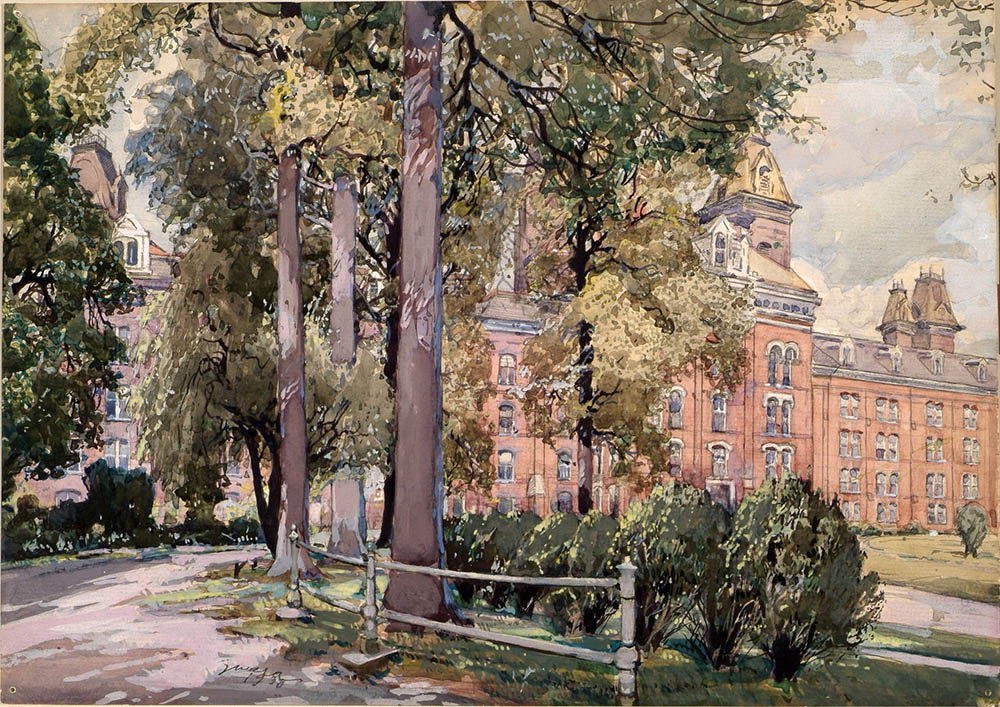
“When people got too interested in him, he went back to sleeping under bridges,” Rachel Berenson Perry, fine-arts curator at the Indiana State Museum, said of Depression-era artist John Zwara’s six month stay at Central State Hospital for the Insane in 1938. Little is known of the Hungarian immigrant who wandered the United States in the early 1900s, painting mostly landscapes and watercolors, and settled in Indianapolis in the 1930s. Diagnosed with schizophrenia, Zwara preferred a life of solitude in which he could focus on his work; oftentimes, this meant living without a home on the streets of Indianapolis, according to Perry. Zwara’s work, however, was brought to the forefront in local news when the Indiana Medical History Museum (IMHM),...
Asking "What's Going on" About a Newspaper Blurb
“Two white inmates of the Indiana female prison set fire to the building because they were compelled to eat with colored inmates.” That is all that is said about a fire, racial tensions, and prison life in a column of an Indianapolis newspaper in 1892. The short blurb raises a series of questions: Were the living quarters in prison segregated by race at this time? What were the conditions these women were living in and how were they able to start a fire? Were they any casualties of this fire? What happened to the women who set the fire? What was the role of the wardens? What were the perspectives of the black women? From the short blurb, we can...
Anna Agnew: An Advocate for Insanity
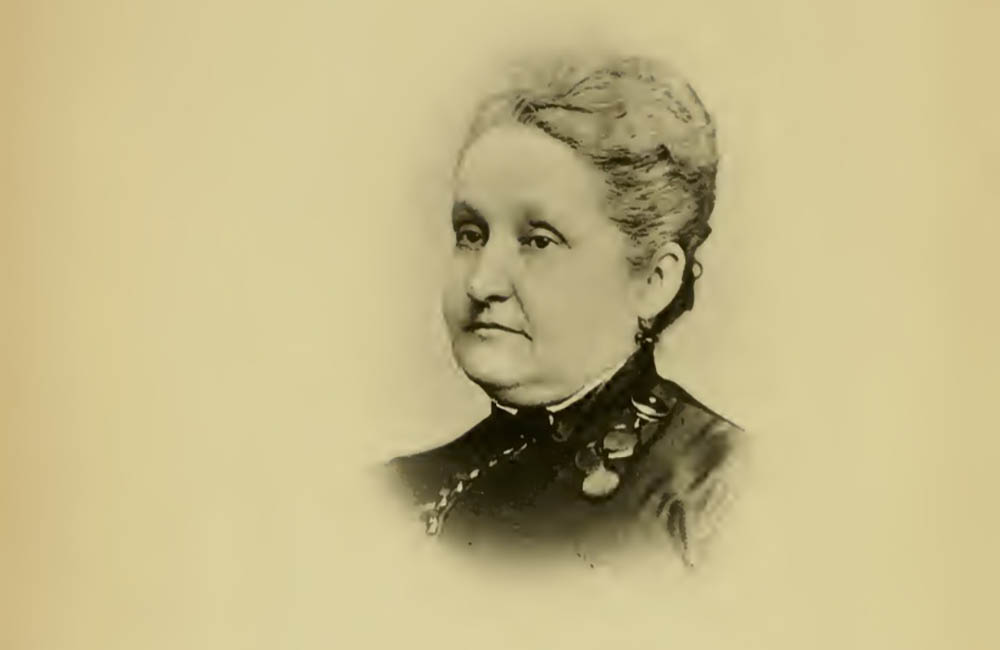
“And I do not remember the time, when opportunity suggested the trial— such as standing upon an elevation, or being upon water of sufficient depth, that I had not to exercise the utmost strength of will to control the impulse to then and there cross the invisible line, and be free from the tormenting, persistent feeling of pursuit and unrest.” Anna Agnew wrote about her time spent at Indiana Hospital for the Insane (later called Central State Hospital) in Indianapolis, Indiana in her very popular book, From Under the Cloud: or, Personal Reminiscence of Insanity (1886). At the age of 42, Anna was admitted to the hospital wards with a diagnosis of acute mania. Prior to her admission, Anna had...
SHaRC Demonstration in Chicopee, MA
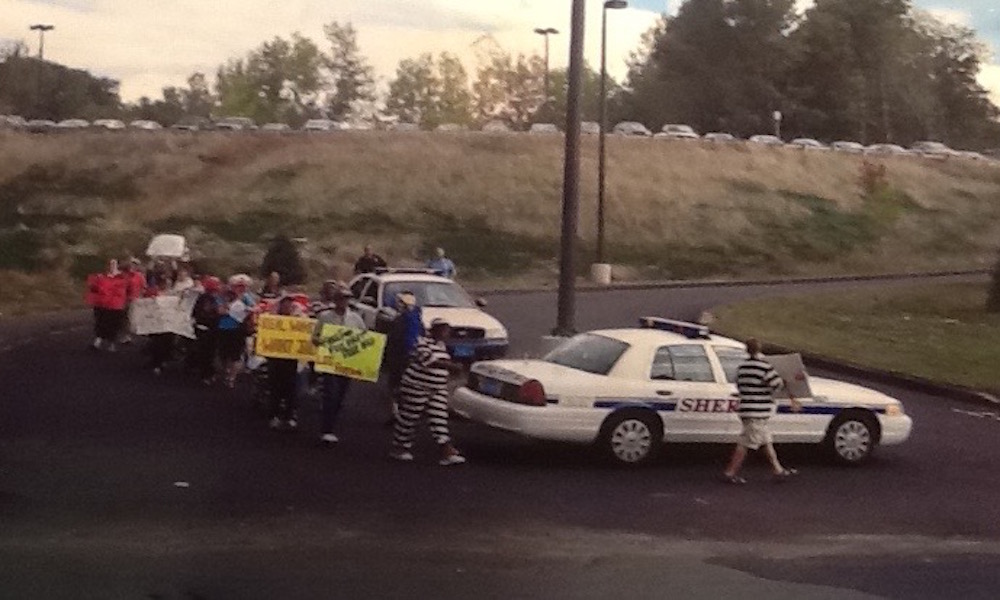
Statewide Harm Reduction Coalition (SHaRC) demonstration in Chicopee, MA. This demonstration is one of many organized by SHaRC members between 2003 and 2006 to contest the need for a new women’s prison in western MA. They organized educational events monthly, each with a theme such as “Homes not Jails” and “Healthcare not Jails.” Despite protests from SHaRC and community members, the Western Massachusetts Regional Women's Correctional Center (WMRWCC) opened in September, 2007.
"Stop Chicopee Jail"
WORTH Anti-Shackling Rally
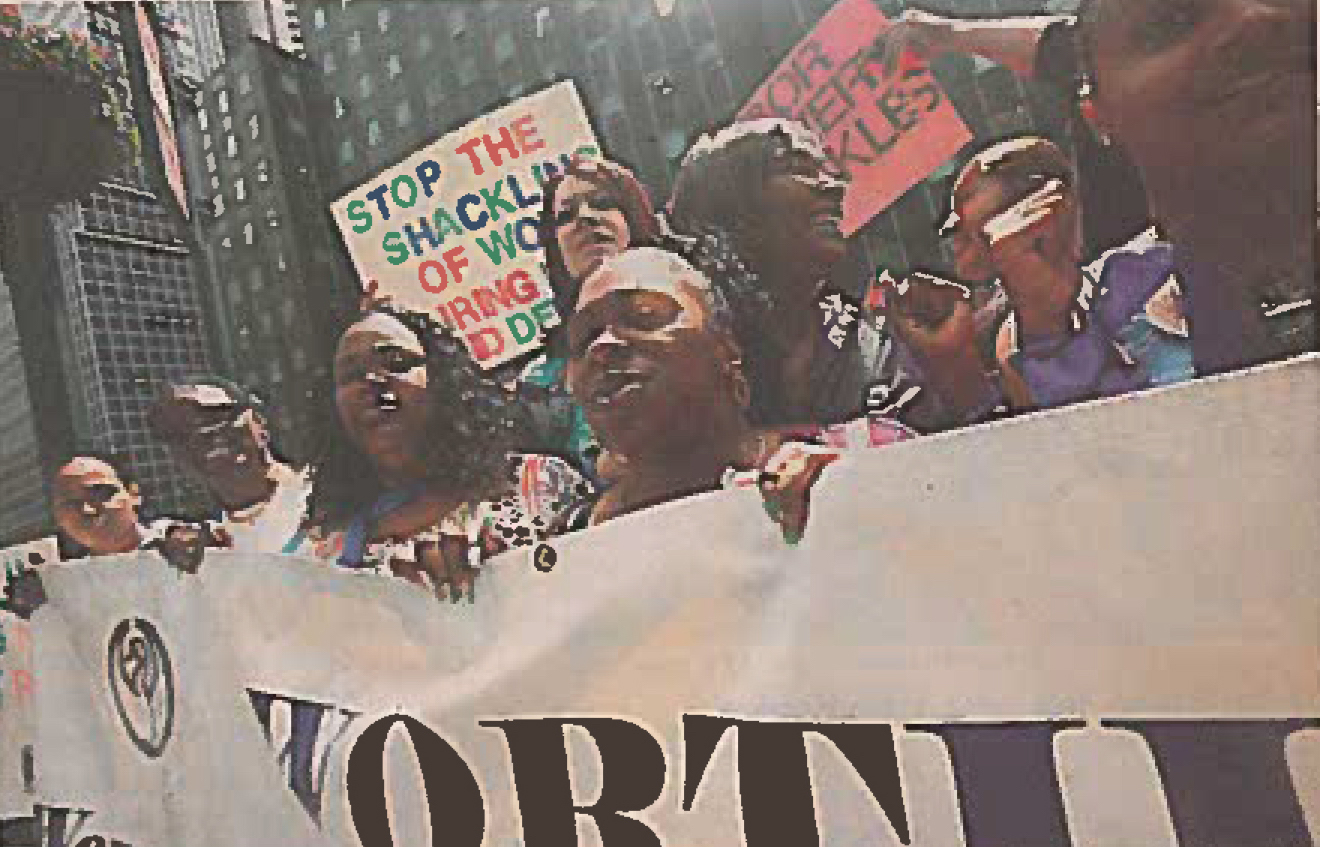
In July 2009, dozens of protesters gathered in Manhattan outside of then-governor David Paterson’s office to demand an end to the practice of shackling incarcerated women during childbirth. In May 2009, both houses of the New York State Legislature passed a bill that would bar the shackling of women during labor. At the time of the rally, the bill was being reviewed by the governor’s office. This image, depicting protesters in Manhattan, was published alongside a newspaper article that focuses on some of the experiences of formerly incarcerated women who experienced the practice of shackling during childbirth. This was one of several demonstrations that Women on the Rise Telling Her Story (WORTH) organized in 2009. At least once a week,...
Going Pink for Breast Cancer Awareness?

This October, in honor of Breast Cancer Awareness Month, all of the officers at the Greenfield Police Department changed their collar pins to pink and white pins that read “ARREST BREAST CANCER – UNLOCK THE CURE” surrounded by pink ribbon and pink handcuffs. Some officers also replaced their silver, on-duty handcuffs with pink handcuffs, to be used throughout the workday. Do you see any contradictions between a police department trying to demonstrate concern for women’s health while using tools, such as handcuffs, associated with the carceral state? Ryan Trowbridge, “ Greenfield police officers going pink for breast cancer awareness ,” Western Mass News (October 1, 2015; updated November 12, 2015).
Massachusetts Statewide Harm Reduction Coalition
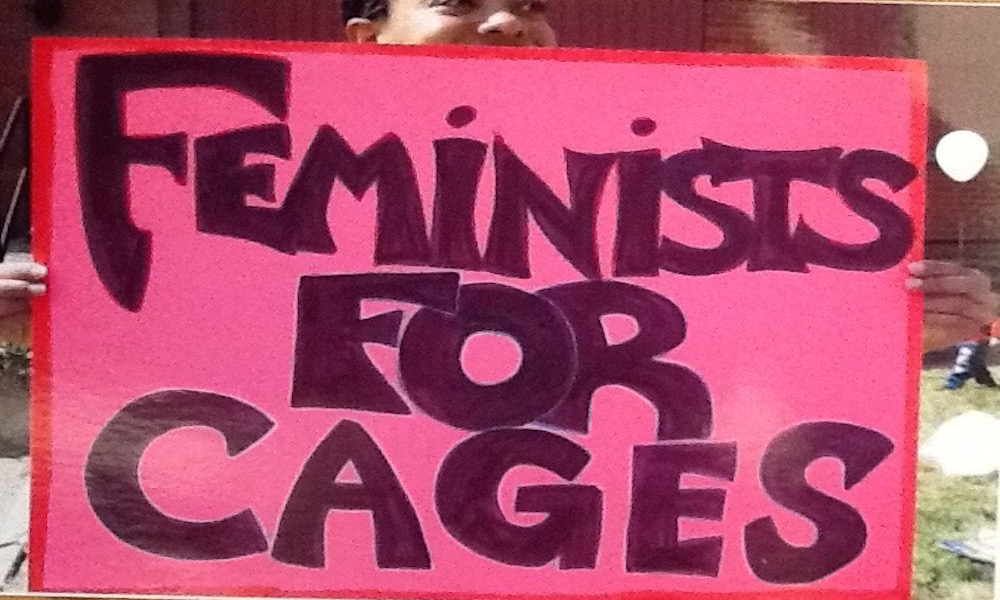
Statewide Harm Reduction Coalition (SHaRC) demonstration in Chicopee, MA (2006). A demonstrator holds a sign that reads, “feminists for cages,” which is an ironic reference to arguments that building women-specific jails would benefit women. The construction of women-specific jails and prisons has been supported by three main arguments: issues of overcrowding, proximity to family and support, and the need to provide women with “a place of their own.” In 2005, Sheriff Michael Ashe said that the facility in Chicopee would “serve the women’s population better.” SHaRC responded saying that women would be best served by remaining in their communities and having access to affordable housing, food, job opportunities, childcare, quality education, and health care. They argued that building healthy communities...
- ‹ previous
- 4 of 5
- next ›
